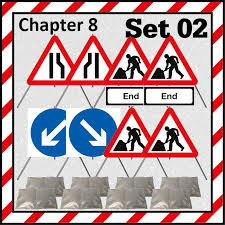Safety signs are an essential part of our daily lives. They are everywhere, from the workplace to public spaces, and they play a crucial role in keeping us safe and protected. Safety signs provide us with important information about potential hazards, risks, and precautions that we need to take to avoid accidents or injuries.
The use of safety signs is regulated by health and safety laws that require employers and public authorities to provide clear and visible signage in areas where there is a risk of harm. Safety signs come in different shapes, colours, and symbols, each with a specific meaning that helps us understand what we need to do to stay safe.
For example, a red circle with a diagonal line through it indicates that something is prohibited or not allowed. This could be anything from smoking in a public area to using mobile phones in a construction site. A yellow triangle with an exclamation mark warns us of potential dangers such as slipping hazards or electrical equipment.
Green signs usually indicate safe areas or emergency exits, while blue signs provide information about mandatory actions such as wearing protective clothing or using safety equipment like helmets or goggles.
Safety signs are designed to be easily understood by everyone regardless of their language or literacy level. They use simple symbols and colours to convey their message, making them accessible to all.
In addition to their practical purpose, safety signs also serve as reminders of the importance of safety in our daily lives. They encourage us to be aware of our surroundings and take responsibility for our own safety as well as that of others around us.
However, it’s important to remember that safety signs are not foolproof solutions. They can only do so much in preventing accidents or injuries. It’s up to all of us to remain vigilant and follow the instructions provided by the signage.
In conclusion, safety signs are an integral part of our lives that help keep us safe from harm. They provide vital information about potential hazards and risks that we need to be aware of. By following their instructions, we can all contribute to creating safer environments for ourselves and those around us.
Common Questions About Safety Signs: Types, Purpose, and Main Categories
- What are the 4 types of safety signs?
- What is safety signs for?
- What are the 5 main safety signs?
- What are the 7 safety signs?
What are the 4 types of safety signs?
The four types of safety signs are:
Prohibition Signs: These signs are used to prohibit or restrict certain actions or behaviors. They are usually circular with a red border and a diagonal line through the symbol or text.
Warning Signs: These signs are used to warn people of potential hazards or dangers. They are usually triangular with a yellow background and black text or symbols.
Mandatory Signs: These signs are used to indicate actions that must be taken in order to prevent accidents or injuries. They are usually circular with a blue background and white text or symbols.
4. Emergency Signs: These signs are used to indicate the location of emergency equipment, such as first aid kits, fire extinguishers, and emergency exits. They are usually rectangular with a green background and white text or symbols.
What is safety signs for?
Safety signs are used to provide important information about potential hazards, risks, and precautions that we need to take to avoid accidents or injuries. They are designed to be easily understood by everyone regardless of their language or literacy level. Safety signs come in different shapes, colours, and symbols, each with a specific meaning that helps us understand what we need to do to stay safe. The use of safety signs is regulated by health and safety laws that require employers and public authorities to provide clear and visible signage in areas where there is a risk of harm. Overall, safety signs play a crucial role in keeping us safe and protected in our daily lives.
What are the 5 main safety signs?
The 5 main safety signs are:
Prohibition Signs: These signs have a red circle with a diagonal line through it, indicating that an action is prohibited or not allowed. Examples include “No Smoking,” “No Entry,” and “No Parking.”
Warning Signs: These signs have a yellow triangle with an exclamation mark, indicating potential hazards or dangers. Examples include “Slippery Surface,” “High Voltage,” and “Biohazard.”
Mandatory Signs: These signs have a blue circle with a white symbol inside, indicating mandatory actions that must be taken. Examples include “Wear Safety Goggles,” “Use Hand Sanitizer,” and “Keep Door Closed.”
Emergency Signs: These signs have a green background with white symbols or text, indicating emergency exits or safe areas in case of an emergency. Examples include “Emergency Exit,” “First Aid Station,” and “Fire Extinguisher.”
5. Fire Safety Signs: These signs have a red background with white symbols or text, indicating fire safety equipment or procedures. Examples include “Fire Alarm Call Point,” “Fire Extinguisher Location,” and “Fire Assembly Point.”
What are the 7 safety signs?
The 7 safety signs are:
Prohibition Signs: These signs indicate actions or behaviors that are not allowed, such as no smoking or no entry.
Warning Signs: These signs warn of potential hazards or dangers, such as slippery floors or high voltage areas.
Mandatory Signs: These signs indicate mandatory actions that must be taken, such as wearing personal protective equipment (PPE) or using a safety harness.
Emergency Signs: These signs provide information about emergency exits, first aid stations, and other emergency procedures.
Fire Safety Signs: These signs indicate the location of fire extinguishers, fire alarms, and other fire safety equipment.
Safe Condition Signs: These signs indicate safe conditions in an area, such as a safe place to cross the road.
7. Informational Signs: These signs provide general information about a particular area or activity, such as directions to a specific location or parking instructions.

